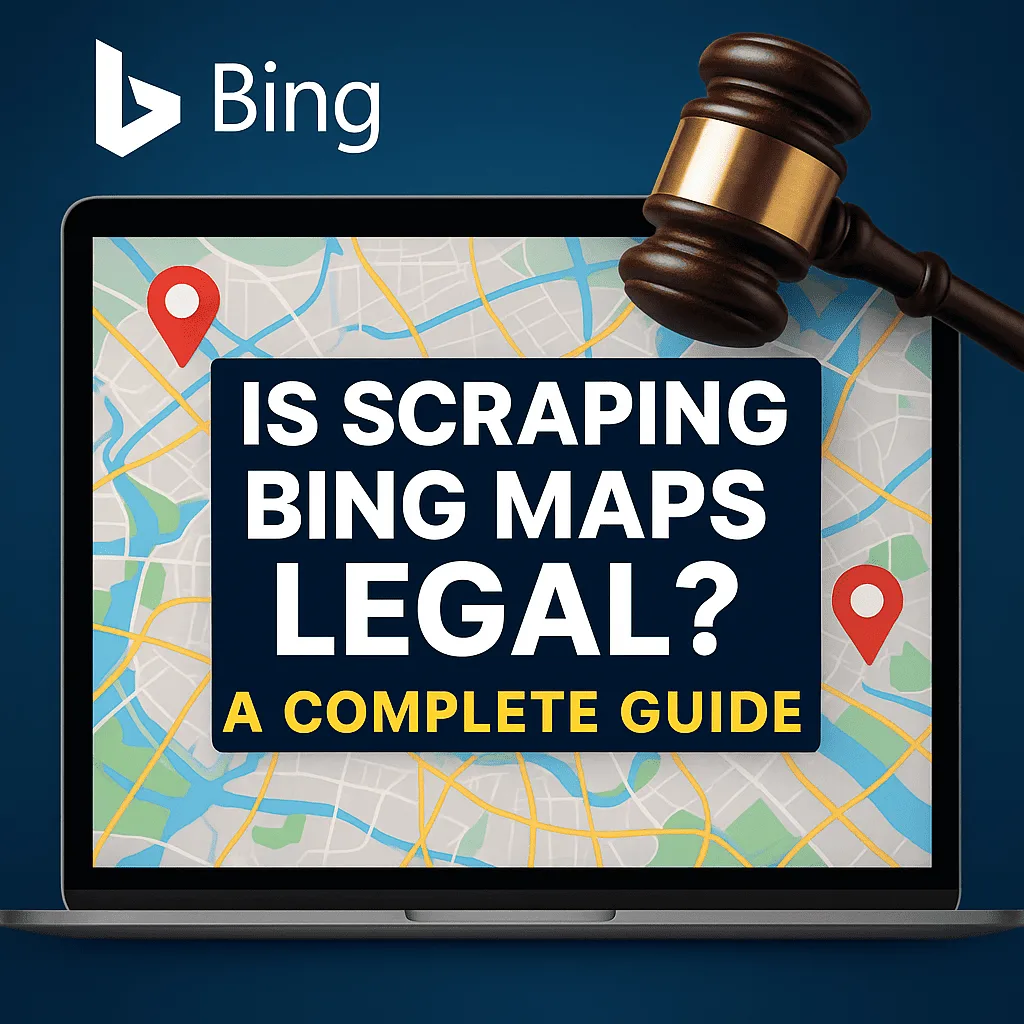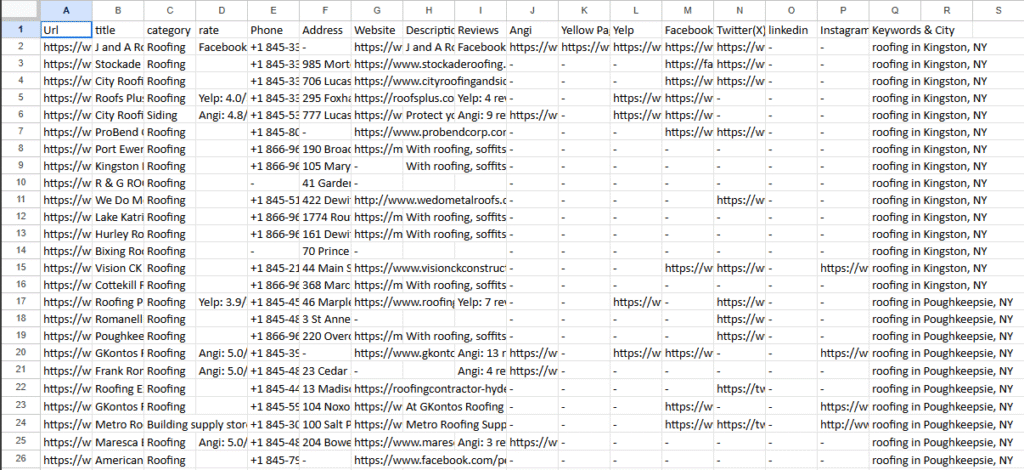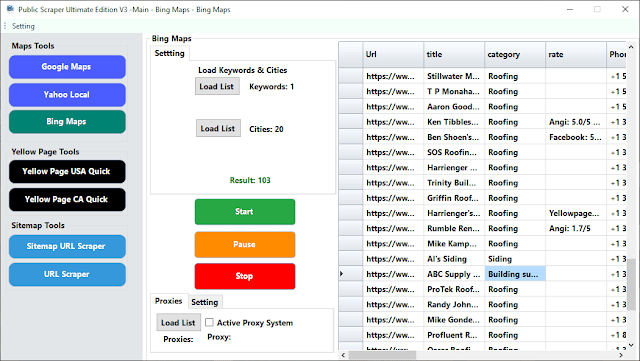For lead gen and location research, Bing Maps scrapers have become the shiny new wrench in the toolkit. Marketers love them for pulling business names, addresses, phone numbers, even categories—stuff that’s genuinely useful. But before anyone hits “run,” the nagging question lands: wait, is scraping Bing Maps actually legal?
This piece walks through the legal, ethical, and practical angles so you can gauge risk and pick the saner path forward.

What “Web Scraping” Is (and Isn’t)
Web scraping is just automated collecting of data from web pages. In principle, a script does what a person could do by hand, only faster and at scale. That technical definition is simple enough.
The law is not that simple. Scraping per se isn’t automatically illegal; the trouble starts with where the data lives, how you collect it, and what you do with it afterward. In the U.S., courts have upheld scraping of publicly viewable pages in certain contexts—think of the hiQ Labs v. LinkedIn saga, where the court said pulling public profiles didn’t violate the Computer Fraud and Abuse Act (CFAA). But scrape content behind logins, copy protected material, or ignore a site’s Terms of Service, and you can stray into breach-of-contract or other claims pretty fast. Context matters. A lot.
What Microsoft Says About Bing Maps
Because Bing Maps is Microsoft’s service, their Terms of Use are the starting line—and kind of the finish line, too. Those terms set the boundaries for how data and imagery can be handled. Highlights, in plain language:
- No bulk copying, downloading, or caching of Bing Maps images or datasets unless the terms say you may.
- Don’t stitch tiles into big composite images (those mega-maps are explicitly a no-go).
- Don’t extract features, geocodes, or full place datasets to seed your own database or product.
- No reverse-engineering or building a competing maps stack on top of Bing’s content.
Microsoft offers official APIs for geocoding, search, routing, and the rest.
So… Is Scraping Bing Maps Legal?
Here’s the short version:
Scraping Bing Maps directly—if you do it outside Microsoft’s official APIs—violates Microsoft’s Terms of Service.
That doesn’t automatically make it illegal in the sense of breaking the law, because the data being scraped is publicly available business information. What it does mean is:
- You’re at risk of IP bans or account restrictions.
- Microsoft can block your access if they detect automated scraping.
- In most cases, there are no legal penalties unless you misuse the data (e.g., for spam or privacy violations).
In other words: scraping Bing Maps is not illegal by itself, but it is unauthorized. You may not face legal charges, but you could lose access to the service if you push too far.hnically possible, legally risky, and contractually prohibited in many common use cases. That’s the rub.
The Risks in Real Life
Terms-of-Service breaches. Using the platform implies you’ve agreed to its rules. Break them and you may see rate limits, blocks.
Intellectual property. Maps, imagery, tiles, and curated datasets belong to Microsoft. Repurposing them without permission can trigger IP issues, not just “bad optics.”
Privacy exposure. If your harvest includes personal data, data protection laws kick in. Think legal bases, notice, retention, and deletion obligations. It’s not just compliance paperwork; penalties can sting.
Reputation hits. Clients and partners increasingly ask, “Where did you get this data?” “We scraped it off a map” rarely inspires confidence.
Safer, More Ethical Alternatives
Scraping doesn’t have to mean taking risks. The key is to focus on publicly available business data—the same information anyone can see by searching Bing Maps manually. Our Bing Maps Scraper Tool simply automates that process, making it faster, more structured, and more reliable.
Here are some best practices to keep things both effective and compliant:
Check local data laws – If you’re operating in regions covered by GDPR, CCPA, or other privacy frameworks, make sure your usage complies. Since the scraper only collects openly published business information, risk is lower, but handling and storage still matter.

Use Bing’s official APIs (but expect limits) – Microsoft provides APIs for map and business data access, but they can be complex, rate-limited, and require coding knowledge. For many marketers and agencies, APIs feel harder to set up and maintain. In contrast, our Bing Maps Scraper delivers the same public business data in a faster, simpler, and more user-friendly way—without the technical headaches.
Respect attribution rules – If you display Bing imagery (maps, aerial views, or Streetside), keep the Bing logo and required notices visible. It’s a small detail, but one that matters for compliance.
Stick to business data, not proprietary datasets – Our scraper focuses on public listings like names, addresses, phone numbers, and categories. It doesn’t tile-stitch maps, copy imagery, or create derivative datasets—those are exactly the practices Microsoft restricts.
When Scraping Still Happens (and Why)
Plenty of teams still use scrapers for competitive intel or prospecting. If they do, they often target already-public business facts (names, phone numbers, hours) rather than tiles or imagery. Lower risk doesn’t mean no risk, though. The safest path stays the same: prefer official APIs, respect terms, and calibrate scope. And—this is important—document your reasoning and controls. A compliance memo beats a shrug later.
Using a Bing Maps Scraper Wisely
The Bing Maps Scraper can speed up lead collection for agencies and marketers, but remember: the tool doesn’t override Microsoft’s terms or local laws. Always use it responsibly.
How to Use a Bing Maps Scraper (Simplified)
- Load keywords – e.g., plumbers, coffee shops, real estate agents.
- Choose locations – cities, regions, or countries relevant to your campaign.
- Enable proxy (optional) – rotate IPs for large-scale scrapes.
- Run the scraper – data compiles into neat rows instead of endless tabs.
- Export & use – download as CSV, XLSX, or JSON, then move it into your CRM or dashboard.
Bottom line: Tools like this save hours of manual work—but they don’t grant legal permission. Always scrape within Microsoft’s allowed use cases.

Bottom Line
Scraping Bing Maps is technically possible, but doing it outside Microsoft’s official APIs generally falls outside their rules.
That doesn’t make it criminal—since the data being collected is public business information that anyone can look up manually—but it can still be viewed as a terms-of-service breach or raise intellectual property questions if misused.
The safe path is always a compliance-first workflow: use the data responsibly, avoid restricted content like map tiles or imagery, and follow local privacy laws (GDPR, CCPA, etc.).
This is exactly where tools like our Bing Maps Scraper – Leads Made Easy & Effective shine. Instead of wrestling with APIs that are slow, rate-limited, and code-heavy, our scraper extracts only publicly available business data—the same info any user could copy by hand—just faster, cleaner, and at scale.
At the end of the day, businesses have to weigh efficiency against risk. With the right tool and responsible practices, you get the speed of automation without the unnecessary headaches.
Leave a Reply